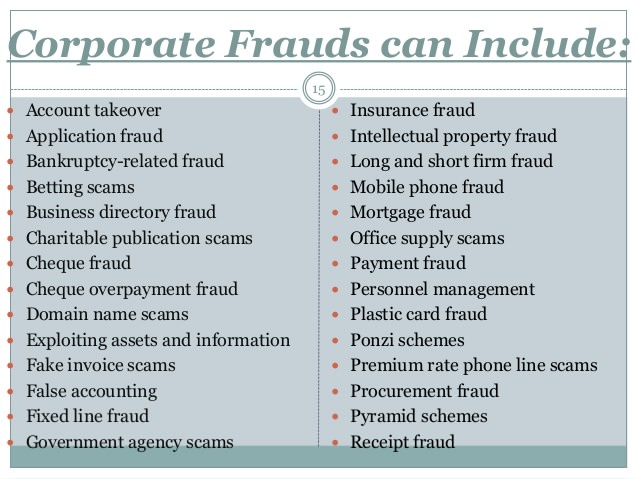Stay Alert, Stay Secure: Your Comprehensive Guide to Fraud Prevention in 2025
1. Introduction: The Escalating Threat of Fraud in Our Hyper-Connected World
The digital age offers unprecedented convenience, but it also opens doors to increasingly sophisticated threats. Fraud is no longer a niche concern; it’s a pervasive issue impacting millions and costing billions. In 2024 alone, consumers reported staggering losses exceeding $12.5 billion to various scams, marking a significant 25% jump from the previous year. Alarmingly, this increase wasn’t driven by more people reporting fraud – the number of reports held steady at 2.6 million – but rather by a sharp rise in the percentage of victims who actually lost money, jumping from 27% in 2023 to 38% in 2024. Parallel data from the FBI’s Internet Crime Complaint Center (IC3) paints an even starker picture, detailing over $16 billion in reported losses from internet crime complaints in 2024, a 33% surge from 2023 figures. These numbers underscore a critical reality: scams are becoming more effective at extracting larger sums per incident. This trend likely reflects the growing sophistication of fraud tactics, fueled by accessible technology and a focus on high-value targets like investment schemes.
The landscape of fraud is constantly shifting. Criminals are adept at leveraging emerging technologies, particularly Artificial Intelligence (AI), to enhance their schemes, making them more convincing and harder to detect. We are seeing a sharp rise in targeted fraud schemes that capitalize on gaps in digital security and exploit fundamental human vulnerabilities. Attacks are becoming more personalized, exploiting information readily available online and using AI to mimic trusted individuals or institutions with startling accuracy. The sheer volume and accelerating growth rate of financial losses demonstrate that while foundational security practices remain essential, they are not sufficient alone to combat the ingenuity of modern fraudsters. Awareness, critical thinking, and adaptability are now paramount.
This article serves as your comprehensive guide to navigating the complex fraud environment of 2025. We will dissect the most prevalent and emerging threats, drawing on the latest data and insights from authoritative sources like the Federal Trade Commission (FTC), the Federal Bureau of Investigation (FBI), and the Cybersecurity and Infrastructure Security Agency (CISA). More importantly, we will equip you with actionable prevention strategies – from essential cyber hygiene to specific tactics for identifying and avoiding sophisticated scams, including those powered by AI. Finally, we will outline the crucial steps to take if you become a victim. Our goal is to empower you with the knowledge and tools needed to proactively defend yourself, your finances, and your identity in an increasingly challenging digital world, providing helpful, user-first content designed to keep you safe.
2. Decoding the Danger: Top Fraud Threats to Watch for in 2025
Understanding the current fraud ecosystem is the first step toward effective prevention. Criminals employ a diverse range of tactics, constantly refining their approaches to maximize impact.
Overview – The Current Fraud Ecosystem
Based on recent reports, the most common cybercrimes reported by victims in terms of sheer volume are phishing/spoofing attempts, extortion schemes, and personal data breaches. However, when measured by financial loss, investment scams inflict the most damage, followed closely by imposter scams. Investment scams, particularly those involving cryptocurrency, accounted for over $6.5 billion in losses reported to the FBI in 2024 , while the FTC tracked $5.7 billion lost to investment scams overall. Imposter scams resulted in nearly $3 billion in losses reported to the FTC.
Fraudsters are increasingly reaching potential victims through digital channels. While email remains a primary contact method, phone calls and especially text messages (smishing) are rapidly growing vectors. Losses attributed to scams initiated via text message soared to $470 million in 2024, a fivefold increase compared to 2020, even as the number of reported text scams declined, indicating higher losses per successful scam. Common text scams involve fake package delivery issues and bogus job opportunities.
While fraud affects all demographics, older adults (age 60 and over) consistently suffer the highest financial losses, nearing $5 billion according to the FBI’s 2024 report, and they also submit the greatest number of complaints. However, specific scams target younger demographics as well, such as sextortion scams aimed at teenagers.
The AI Revolution in Fraud: A Force Multiplier for Deception
The advent of accessible Artificial Intelligence, particularly generative AI, marks a significant escalation in the fraud landscape. AI isn’t just creating new scam types; it’s fundamentally amplifying the effectiveness, believability, and scale of existing methods.
AI tools allow criminals to generate highly convincing fraudulent content with unprecedented ease and speed. This includes:
- Hyper-Realistic Text: Crafting phishing emails, text messages, and website copy that are grammatically perfect and tailored to the victim, overcoming previous tell-tale signs of foreign scammers. Analysis shows a staggering 82% of phishing emails exhibited some form of AI usage, a 53% year-over-year increase. Polymorphic phishing uses AI to create constantly changing, evasive messages.
- Convincing Fake Websites & Storefronts: AI can generate entire e-commerce sites, complete with fake product descriptions, images, customer reviews, and business histories, making it difficult for consumers to distinguish legitimate merchants from scams. AI-powered chatbots add another layer of deception, stalling customers and manipulating complaints.
- Deepfakes (Voice & Video): Perhaps the most alarming development is the use of AI to create realistic audio and video forgeries of real people. This technology enables:
- Corporate Impersonation: Scammers clone the voice and likeness of executives for live video conferences, tricking finance employees into authorizing large fraudulent wire transfers. The notorious $25 million Hong Kong case in early 2024, where a finance worker was duped by deepfake executives in a video call, exemplifies this potent threat. This represents a sophisticated evolution of Business Email Compromise (BEC). Deloitte research indicated that nearly 26% of executives reported their organizations experienced deepfake incidents, while another study claimed 92% of companies suffered financial loss due to deepfakes.
- Targeting Individuals: Deepfakes enhance scams targeting individuals by adding a layer of perceived authenticity. AI-generated voices mimicking loved ones can make grandparent scams or fake kidnapping plots terrifyingly real. In romance scams, AI can generate contextually appropriate chat responses 24/7 and even facilitate real-time deepfake video calls, amplifying emotional manipulation. AI is also used to create fake celebrity endorsements for fraudulent investment schemes.
- The Liar’s Dividend: The very existence of deepfakes erodes trust in genuine media and communication, creating a situation where even authentic evidence can be dismissed as potentially fake.
- AI for Scale and Automation: AI significantly lowers the barrier to entry for fraudsters and increases the efficiency of their operations. AI tools can automate the creation of fake identities in bulk, scrape the web for target information, personalize phishing lures at scale, deploy credential stuffing bots to test stolen logins, and power chatbots on scam websites. One sophisticated operation can now potentially manage thousands of individualized scams simultaneously.
The proliferation of these AI tools means that sophisticated deception techniques, once requiring significant technical skill or resources, are now accessible to a much broader spectrum of malicious actors. This necessitates a fundamental shift in how we approach verification and trust online.
Spotlight on High-Impact Scams
While AI enhances many fraud types, several specific scam categories consistently cause significant harm:
- Investment & Cryptocurrency Scams: These consistently top the charts for financial losses, with the FTC reporting $5.7 billion lost in 2024 and the FBI noting over $6.5 billion lost specifically through crypto investment fraud. Scammers lure victims with promises of unusually high or guaranteed returns with little risk, often creating a sense of urgency to invest quickly. They employ fake trading platforms, promote non-existent tokens or coins, and may use AI to generate convincing documentation, websites, or personalized communications. A particularly insidious variant is Pig Butchering, where scammers build trust, often through fake romantic relationships online (“fattening the pig”), before convincing the victim to invest large sums in fraudulent crypto schemes (“the slaughter”). Emerging threats include “Quantum AI” investment scams using deepfakes and fake celebrity endorsements to appear legitimate.
- Imposter Scams: The second-highest category for reported losses ($2.95 billion in 2024 ), imposter scams rely on tricking victims by pretending to be a trusted entity. Common impersonations include:
- Government Agencies: Posing as the IRS demanding back taxes, the Social Security Administration threatening benefit suspension, or law enforcement. Losses to government imposters alone reached $789 million in 2024. Remember, legitimate agencies rarely initiate contact to demand immediate payment or sensitive information, especially via phone or text, and never demand payment via gift card, wire transfer, or cryptocurrency.
- Banks/Financial Institutions: Sending fake fraud alerts via text or email, claiming an account is compromised, and asking for login details or instructing the victim to transfer funds to a “safe” account.
- Tech Support: Displaying fake virus warnings or error messages (often via pop-ups) urging victims to call a number or grant remote access to their computer, then charging for bogus services or installing malware. They might impersonate well-known companies like Apple or Microsoft.
- Businesses: Fake invoices, shipping notifications with malicious links, or impersonating customer service.
- Family/Friends (Grandparent Scam): Urgent, panicked calls claiming a relative (often a grandchild) is in jail, had an accident, or is stranded and needs money wired immediately. AI voice cloning makes these calls chillingly realistic. Scammers often plead for secrecy to prevent verification.
- Romance Scams: Creating fake profiles on dating sites/social media, building emotional connections (enhanced by AI chat and deepfake calls), then requesting money for fabricated emergencies, travel, or eventually, luring victims into investment scams (often overlapping with Pig Butchering).
- Fake Investigation Scam: Scammers posing as bank investigators or law enforcement claim the victim’s account is involved in fraud and instruct them to withdraw cash or transfer funds to “help the investigation” or “secure their money”. They may ask the victim to lie to bank employees.
- Employment & Task Scams: This category has seen explosive growth. Losses reported to the FTC under “Business and Job Opportunities” neared $751 million in 2024, up significantly from the previous year, with job scams specifically accounting for $501 million. These scams prey on individuals seeking work, especially remote opportunities.
- Fake Job Advertisements: Scammers post fictitious job openings on legitimate platforms like LinkedIn and Indeed. The goal is often to harvest personal information (Social Security numbers, bank details for “direct deposit”) under the guise of onboarding paperwork. Other variations involve requesting payment for non-existent training, certifications, or equipment, sometimes using fake checks that bounce after the victim sends money back for an “overpayment”. AI is used to generate realistic fake job listings and recruiter profiles.
- Task Scams: These typically start with unsolicited messages (Text, WhatsApp, Telegram) offering easy online work with flexible hours. Victims are asked to perform simple, repetitive tasks like liking videos, rating products, writing reviews, or “optimizing apps” using a specific app or online platform provided by the scammer. The platform creates the illusion of earning commissions, often gamified with task sets and levels. Small initial payouts may build trust. However, the core deception involves requiring victims to deposit their own money (usually cryptocurrency like USDT) to “unlock” further tasks, upgrade their account, or withdraw their supposed earnings. This exploits the sunk cost fallacy – victims keep depositing money hoping to recover their “earnings” and previous deposits. The displayed earnings are fake, and any deposited funds are lost. Scammers may use group chats with fake testimonials to maintain the illusion. The FTC reported a massive surge in task scam reports in the first half of 2024.
- Evolving Phishing Tactics (Phishing, Smishing, Vishing, Quishing): Despite being one of the oldest forms of cybercrime, phishing remains the most frequently reported type by complaint volume. The fundamental goal is unchanged: tricking victims into revealing sensitive information (login credentials, credit card numbers, SSNs) or installing malware via malicious links or attachments. However, the delivery methods and sophistication continue to evolve:
- Smishing (SMS Phishing): Exploits the immediacy and trust associated with text messages. Common lures include fake package delivery alerts (“click here to track/resolve issue”), bank fraud warnings, bogus job offers, fake unpaid toll notices, or “wrong number” texts designed to initiate conversation leading to other scams. The $470 million lost to text scams in 2024 highlights its effectiveness.
- Vishing (Voice Phishing): Phone-based impersonation scams, now significantly enhanced by AI voice cloning technology, making it difficult to discern real voices from fakes. This impacts grandparent scams, tech support scams, and bank imposter calls.
- Quishing (QR Code Phishing): Malicious QR codes placed in public or sent via email/message can redirect users to fake login pages designed to steal credentials or trigger unauthorized payments when scanned.
- AI-Enhanced Phishing: As mentioned earlier, AI generates highly personalized, contextually relevant, and grammatically flawless phishing messages, bypassing traditional detection methods and making lures more convincing. Some phishing kits now even vet victims in real-time before attempting to steal credentials.
- Account Takeover (ATO), Data Breaches, and Identity Theft: These threats are often interconnected. Account takeover remains a significant risk, with criminals targeting emerging channels like mobile wallets, P2P payment apps (Zelle®, Venmo®), and cryptocurrency platforms alongside traditional online accounts. Personal data breaches, the third most reported crime type , provide the fuel for identity theft. Over 1.1 million identity theft reports were filed via the FTC’s IdentityTheft.gov in 2024. Stolen information (names, addresses, birth dates, SSNs, bank account numbers, medical insurance details) is used by criminals to open fraudulent credit card accounts, apply for loans, file fake tax returns, commit medical fraud, or drain existing accounts. Check fraud is also seeing a resurgence, aided by AI-generated forgeries that mimic handwriting and security features, often exploited via remote deposit capture. Other vectors include SIM swapping (transferring a victim’s phone number to a scammer’s SIM card to intercept verification codes) and malicious mobile apps designed to steal data or commit fraud.
The prevalence of scams targeting emotional vulnerability – playing on romance, fear, urgency, or the desire for easy money – underscores a crucial point. While technological defenses are vital, they are insufficient on their own. Scammers are adept social engineers, and AI is amplifying their ability to manipulate. Therefore, effective prevention requires not only technical safeguards but also heightened psychological awareness, critical thinking, and a healthy dose of skepticism towards unsolicited communications, especially those involving money or personal information. The tactical shift towards text messages and messaging apps further highlights this, as criminals exploit channels often perceived as more personal and immediate, potentially bypassing robust email security filters and catching users off-guard.
Table 1: Overview of Top Fraud Threats in 2025
| Scam Category | Key Mechanics & Examples | Common Tactics & Technologies |
|---|---|---|
| Investment & Crypto | Promises of high/guaranteed returns; Fake platforms/tokens; Pig Butchering (romance + investment); Pressure to act fast. Ex: Fake crypto exchanges, Ponzi schemes, Quantum AI scams. | Social engineering, Fake websites/apps, AI-generated documents/endorsements, Deepfakes, Cryptocurrency payments (hard to trace/reverse). |
| Imposter Scams | Pretending to be trusted entity (Govt: IRS/SSA; Bank; Tech Support: Apple/Microsoft; Law Enforcement; Business; Family/Grandchild; Romantic Interest; Investigator). | Urgency, Threats, Emotional manipulation (fear, love, panic), Requests for sensitive info/payment (wire, gift card, crypto), AI Voice Cloning, Deepfakes. |
| Employment & Task Scams | Fake job ads on legit sites to steal info/money; Unsolicited messages (Text/WhatsApp) for easy tasks (liking, rating); Fake platforms show “earnings,” require crypto deposits. | Unsolicited contact, Too-good-to-be-true offers, Upfront payment requests, Fake checks, Gamified platforms, Crypto deposits, Sunk cost fallacy exploitation. |
| Phishing & Variants | Tricking victims into revealing info or clicking malicious links/attachments via Email (Phishing), Text (Smishing), Voice call (Vishing), QR Codes (Quishing). | Deceptive messages (fake alerts, invoices, delivery issues), Spoofed sender info (email/caller ID), Malicious links/attachments, AI-enhanced personalization. |
| ATO & Identity Theft | Gaining unauthorized access to accounts (bank, email, social media, P2P, crypto); Using stolen personal data (from breaches) for new account fraud, loan fraud, tax fraud, etc. | Credential stuffing, Phishing, Malware, SIM swapping, Malicious apps, Data breaches, AI-generated check forgeries, Exploiting weak passwords/security. |
Export to Sheets
3. Building Your Defenses: Actionable Fraud Prevention Strategies
While the threat landscape is daunting, individuals can significantly reduce their risk by adopting a multi-layered defense strategy. This involves strengthening foundational security habits, developing keen scam detection skills, actively protecting financial assets and identity, navigating the digital world cautiously, and specifically countering AI-driven threats.
Foundational Layer: Mastering Cyber Hygiene Essentials
These basic practices form the bedrock of personal cybersecurity:
- Strong, Unique Passwords: Weak or reused passwords are a primary target for attackers. Create complex passwords using a mix of uppercase letters, lowercase letters, numbers, and symbols for every online account. Avoid easily guessable information like birthdays or names. Crucially, never reuse passwords across different sites; a breach on one site could compromise all others where the same password is used. Consider using a reputable password manager to generate and store strong, unique passwords securely. Do not store passwords in plain text on your devices.
- Multi-Factor Authentication (MFA): Often called two-factor authentication (2FA), MFA adds a critical layer of security beyond just a password. It requires a second form of verification, such as a code sent to your phone via text or an authenticator app, a fingerprint, or facial recognition. Enable MFA on all sensitive accounts – especially financial accounts, email, and social media – wherever it is offered. While SMS-based MFA is better than none, authenticator apps or hardware security keys are generally considered more secure options, as SMS can be vulnerable to SIM swapping.
- Software Updates: Cybercriminals actively exploit known vulnerabilities in outdated software. Regularly update your operating systems (Windows, macOS, iOS, Android), web browsers, and other applications on all your devices (computers, smartphones, tablets). Enable automatic updates whenever possible. Install and maintain reputable security software, including antivirus, anti-malware, and firewall protection.
Active Defense: Sharpening Your Scam Detection Skills
Beyond basic hygiene, developing a critical mindset is essential:
- Verify, Verify, Verify: Treat all unsolicited communications – emails, texts, phone calls, social media messages – with suspicion, especially if they ask for personal information, money, or urge immediate action.
- Independent Contact Method: If you receive a communication that seems potentially legitimate (e.g., a fraud alert from your bank, a delivery notification), do not click on any links, download attachments, or call phone numbers provided in the message. Instead, contact the organization directly using a phone number or website address you know is genuine (e.g., from their official website, the back of your credit card, or a previous statement).
- Recognize Common Red Flags: Be alert for tactics scammers frequently use:
- Sense of Urgency: Pressure to act immediately (“limited time offer,” “account will be closed,” “avoid arrest”).
- Threats or Fear Tactics: Warnings of dire consequences if you don’t comply.
- Requests for Sensitive Information: Asking for passwords, PINs, full Social Security numbers, or bank account details via unsolicited contact. Legitimate organizations rarely do this.
- Unusual Payment Methods: Demands for payment via gift cards, cryptocurrency, or wire transfers to unknown individuals. These methods are difficult to trace and recover.
- Offers Too Good to Be True: Unrealistic investment returns, high-paying jobs requiring no experience, lottery winnings you didn’t enter.
- Poor Communication (Less Reliable Now): While traditionally a red flag, AI allows scammers to create grammatically perfect messages. However, still be wary of unprofessional tone or odd phrasing.
- Requests to Lie: Being asked to mislead bank employees or others.
- Link and Website Scrutiny: Before clicking any link, hover your mouse cursor over it to preview the actual destination URL. Ensure it matches where you expect to go and looks legitimate. Be wary of slight misspellings or unusual domain extensions (typosquatting). Look for
https://(secure connection), but understand that scammers can obtain security certificates too, so it’s not a guarantee of legitimacy. Treat QR codes with caution; verify their source before scanning. - Spoofing Awareness: Understand that the sender’s email address (“From” field) and the phone number displayed on caller ID can be easily faked (spoofed). Don’t rely on these alone for verification.
Protecting Assets: Securing Your Finances and Identity
Take proactive steps to safeguard your money and personal information:
- Monitor Accounts Regularly: Frequently review your bank account, credit card, and investment statements online. Look for any transactions you don’t recognize, even small ones, as they can be test charges. Set up transaction alerts with your financial institutions to be notified of activity.
- Use P2P Payments and Wire Transfers Safely: Services like Zelle®, Venmo®, and wire transfers are convenient but offer fewer protections than credit cards and can be difficult or impossible to reverse. Only send money to people you personally know and trust. Be extremely wary of online sellers or buyers insisting on these methods, especially if they pressure you. Never send money back in an “overpayment” scenario.
- Credit Monitoring and Freezes: Check your credit reports regularly from all three major bureaus (Equifax, Experian, TransUnion). You are entitled to one free report from each bureau annually via AnnualCreditReport.com. Consider placing a fraud alert on your credit files; this requires businesses to take extra steps to verify your identity before opening new credit. An initial alert lasts one year, an extended alert (for ID theft victims) lasts seven years. For stronger protection, place a credit freeze (also called a security freeze) on your reports. This restricts access to your credit file, making it much harder for anyone (including you) to open new accounts. Freezes are free to place and lift. You can also place freezes on a minor’s credit report to prevent child identity theft.
- Secure Document Handling: Shred documents containing personal or financial information (bank statements, credit card offers, tax documents) before discarding them. Keep important documents in a secure location. Collect your physical mail promptly, especially when expecting sensitive documents, and use mail holds when traveling. Before selling or discarding computers or mobile devices, ensure they are completely wiped to remove stored financial or personal data.
- Consider Identity Theft Protection Services: Commercial services offer features like credit monitoring, dark web scanning, identity theft insurance, and restoration assistance. Evaluate their costs and benefits based on your individual needs and risk tolerance.
Navigating the Digital World Safely
Adopt cautious habits when online:
- Avoid Public Wi-Fi for Sensitive Activities: Public networks (airports, cafes, hotels) are often unsecured. Avoid accessing online banking, making purchases, or entering sensitive information while connected to them. If you must use public Wi-Fi, use a Virtual Private Network (VPN) to encrypt your connection.
- Verify Websites and Apps: Before entering login credentials or payment information, double-check the website address for accuracy and look for
https://. Be wary of sites with poor design or functionality. Only download mobile apps from official app stores (Google Play, Apple App Store) or directly from the trusted vendor’s website. - Manage Social Media Privacy: Be mindful of the personal information you share on social media platforms, as criminals can use it for social engineering or identity theft. Review and adjust your privacy settings to limit visibility.
- Scrutinize Online Ads and Offers: Don’t automatically trust advertisements seen on social media or search engine results. If an offer seems appealing, go directly to the vendor’s official website to verify its legitimacy rather than clicking the ad link.
Countering AI & Deepfake Threats
The rise of AI requires specific countermeasures:
- Cultivate Heightened Skepticism: Approach unexpected communications or requests with increased caution, even if they appear to come from a known contact or use a familiar voice or image. The ease with which AI can create convincing fakes means traditional trust signals are less reliable.
- Employ Multi-Modal Verification: Do not rely solely on sight or sound to verify identity, especially for high-stakes requests (e.g., transferring money, sharing sensitive data). Use a different, pre-established communication channel to confirm the request. If you get a suspicious email from a colleague asking for an urgent wire transfer, call them on their known phone number. If you get a panicked call supposedly from a relative, hang up and call them or another family member back directly on a number you know is real. Consider establishing secret questions or codewords with close contacts for sensitive matters.
- Enhance Critical Media Literacy: Develop the habit of questioning the authenticity of digital content. While detecting sophisticated deepfakes is becoming harder, look for subtle visual or audio inconsistencies. Understand the “Liar’s Dividend” – the phenomenon where the existence of fakes makes people doubt real information. Practice evaluating sources and verifying claims using methods like the SIFT framework (Stop, Investigate source, Find trusted coverage, Trace claims to original context).
- Be Aware of Technological Defenses: While individual access may be limited, know that businesses and security firms are actively developing and deploying AI-powered detection tools, behavioral biometrics (analyzing typing patterns, mouse movements), liveness checks for authentication, and enhanced monitoring systems to combat deepfakes and AI-driven fraud.
- Practice Adversarial Thinking: Try to think like a scammer. How could AI be misused to exploit vulnerabilities or manipulate situations? Anticipating potential attack vectors can help in recognizing them when they occur.
Ultimately, effective fraud prevention in 2025 demands a shift from passive cyber hygiene to active vigilance and verification. The ease with which AI can mimic trusted sources means the old adage “trust but verify” should evolve to “verify, then trust,” especially when money or sensitive information is involved. Furthermore, the rise of specific, complex scam types like task scams and pig butchering requires targeted awareness. Understanding the mechanics of how these scams operate – the unsolicited contact, the fake platforms, the required deposits, the emotional manipulation – is crucial for early recognition and avoidance, going beyond generic warnings.
Table 2: Quick Guide: Spotting Common Scams
| Scam Type | Common Red Flags | Key Prevention Tip(s) |
|---|---|---|
| Imposter Scams | Unsolicited contact; Urgency/Threats; Requests for info/payment (esp. gift card, wire, crypto); Spoofed ID; Emotional pleas (fear, romance). | Verify identity independently using official contact info; Never send money/info based on unsolicited contact; Be skeptical of urgent requests. |
| Investment/Crypto Scams | Promises of high/guaranteed returns; Pressure to invest quickly; Unsolicited offers; Vague details; Requests for crypto payments; Fake platforms. | Research thoroughly before investing; Be wary of unsolicited opportunities; If it sounds too good to be true, it is; Use reputable platforms only. |
| Employment/Task Scams | Unsolicited offers (Text/WhatsApp); Too-good-to-be-true pay/hours; Requests for upfront payment (training/equipment); Required crypto deposits. | Verify job offers on company site; Never pay to get a job; Ignore unsolicited task offers; Legitimate employers don’t require deposits to work. |
| Phishing/Smishing/Vishing | Unsolicited messages/calls; Requests for login/personal info; Suspicious links/attachments; Generic greetings; Urgency; Typos (less reliable). | Do not click links/attachments in unsolicited messages; Verify requests independently; Use MFA; Be wary of caller ID/sender email spoofing. |
Export to Sheets
Table 3: Essential Cyber Hygiene Checklist
| Practice | Key Action(s) | Why It Matters |
|---|---|---|
| Strong, Unique Passwords | Use complex, long passwords; Different password for each account; Use a password manager. | Prevents easy guessing and limits damage if one account is breached. |
| Multi-Factor Authentication | Enable MFA (2FA) on all important accounts (bank, email, social); Prefer app/key over SMS if possible. | Adds a crucial security layer, making unauthorized login much harder even if password is stolen. |
| Software Updates | Keep OS, browser, apps updated; Enable auto-updates; Use antivirus/firewall software. | Patches security holes exploited by malware and attackers. |
| Secure Browsing/Connections | Avoid public Wi-Fi for sensitive tasks (use VPN if necessary); Check for HTTPS; Verify website legitimacy. | Protects data from interception on insecure networks; Helps avoid fake/malicious websites. |
| Data Minimization & Privacy | Be cautious sharing personal info online/social media; Review privacy settings; Shred sensitive documents. | Reduces the amount of data available for criminals to steal or use for social engineering/identity theft. |
Export to Sheets
4. Responding to Fraud: Steps for Victims
Discovering you’ve been targeted by fraud or identity theft can be stressful and overwhelming. Taking swift, decisive action is crucial to minimize damage and begin the recovery process.
Immediate Actions:
- Cease Communication: If you realize you are interacting with a scammer, stop all communication immediately. Do not respond to further messages or calls. Block their numbers and email addresses. Do not try to “scam the scammer” or waste their time, as this can sometimes lead to retaliation or further engagement.
- Contact Financial Institutions: Immediately call the fraud department of any bank, credit card company, P2P payment app (like Zelle® or Venmo®), cryptocurrency exchange, or other financial institution involved in the fraudulent activity or where your accounts might be compromised.
- Explain that you’ve been a victim of fraud or identity theft.
- Ask them to close or freeze the affected accounts to prevent further unauthorized transactions.
- Dispute any fraudulent charges or transfers and ask for them to be reversed.
- Change all login credentials (usernames, passwords, PINs) for these accounts.
- Use official phone numbers found on their websites or your statements, not numbers provided by the scammer.
- Secure Related Accounts: If the fraud involved compromising an email account or if you reused passwords, immediately change the passwords on other important online accounts (other financial institutions, social media, shopping sites). Enable Multi-Factor Authentication (MFA) wherever possible.
Official Reporting Procedures:
Reporting the incident is vital not only for your recovery but also for law enforcement efforts.
- Report to the Federal Trade Commission (FTC): This is a critical step. File a report online at IdentityTheft.gov or by calling 1-877-438-4338. Provide as much detail as possible. This process generates an official FTC Identity Theft Report, which serves as proof of the crime and is essential for disputing fraudulent accounts and debts with businesses and credit bureaus. The website also creates a personalized recovery plan based on your specific situation.
- Report to Local Law Enforcement: File a report with your local police department. Bring a copy of your FTC Identity Theft Report, a government-issued photo ID, proof of your address (like a utility bill or lease agreement), and any other evidence of the theft (fraudulent bills, notices, etc.). A police report may be required by some businesses or for certain recovery actions.
- Report Internet Crime to the FBI: For crimes conducted online, consider filing a complaint with the FBI’s Internet Crime Complaint Center (IC3) at ic3.gov.
- Notify Credit Bureaus: Contact the fraud departments of the three major credit reporting agencies (Equifax, Experian, TransUnion) to place a fraud alert on your credit file. An initial alert lasts one year and requires creditors to take reasonable steps to verify your identity before opening new credit. You only need to contact one bureau; they are required to notify the other two. For longer-term protection, request an extended fraud alert (lasts 7 years, requires FTC report/police report) or a credit freeze (restricts access to your report, must be placed with each bureau individually).
- Report to Other Relevant Entities: Depending on the scam, report it to:
- The U.S. Postal Inspection Service (USPIS) for mail fraud.
- The Internal Revenue Service (IRS) for tax-related identity theft (using Form 14039 if you haven’t received an IRS notice).
- Social media platforms if the scam occurred there.
- Job search websites if you encountered a fake job posting.
- Your state Attorney General’s office.
Leveraging Recovery Resources:
The aftermath of fraud often requires cleaning up financial records and credit reports.
- Follow Your IdentityTheft.gov Recovery Plan: This personalized plan is your roadmap. It provides step-by-step guidance tailored to your situation, including pre-filled letters and forms to send to businesses, debt collectors, and credit bureaus. It helps you track your progress in closing fraudulent accounts, removing unauthorized charges, correcting errors on your credit report, and dealing with debt collectors trying to collect debts you don’t owe.
- Dispute Fraudulent Accounts and Debts: Use your FTC Identity Theft Report to contact the fraud departments of businesses where new accounts were opened in your name. Explain the identity theft, state that the account/charges are fraudulent, and request they close the account and remove the charges. Ask for written confirmation that the fraudulent debt has been discharged and they will not try to collect it or report it to credit bureaus. If a fraudulent debt appears on your credit report, follow the credit bureaus’ dispute process, providing your FTC report and police report as evidence. If debt collectors contact you about fraudulent debts, send them a letter (using templates from IdentityTheft.gov) stating you don’t owe the debt due to identity theft, include your FTC report, and instruct them to stop contacting you.
- Address Specific Issues: Your IdentityTheft.gov plan will guide you on specific problems like dealing with stolen checks (contacting your bank and check verification systems) , misuse of your Social Security number , fraudulent government benefits claims , or compromised online accounts.
The recovery process can feel daunting and requires persistence. Keep detailed records of all communications, reports filed, and actions taken. Utilizing the centralized resources provided by IdentityTheft.gov is crucial for navigating the complexities effectively. Remember that reporting fraud serves a purpose beyond individual recovery; it provides vital data that helps law enforcement track criminal networks and enables agencies like the FTC and CISA to identify emerging trends and improve prevention efforts for everyone. Your report contributes to the collective defense against these pervasive threats.
Table 4: Official Reporting & Recovery Resources
| Issue/Concern | Agency/Resource | Contact Info / Website | Key Action/Purpose |
|---|---|---|---|
| General ID Theft / Fraud | Federal Trade Commission (FTC) | IdentityTheft.gov / 1-877-438-4338 | File official ID Theft Report, Get personalized recovery plan, Report scams. |
| General ID Theft / Fraud | Local Police Department | (Find local non-emergency number) | File police report (often needed for recovery steps). |
| Internet Crime | FBI Internet Crime Complaint Center (IC3) | ic3.gov | Report online scams, phishing, data breaches, etc. |
| Credit Reporting Issues | Equifax | Equifax.com / 1-800-685-1111 | Place/lift fraud alert or credit freeze, Dispute errors. |
| Credit Reporting Issues | Experian | Experian.com / 1-888-EXPERIAN (397-3742) | Place/lift fraud alert or credit freeze, Dispute errors. |
| Credit Reporting Issues | TransUnion | TransUnion.com / 1-888-909-8872 | Place/lift fraud alert or credit freeze, Dispute errors. |
| Free Annual Credit Reports | AnnualCreditReport.com | AnnualCreditReport.com | Official site to request free annual credit reports from all 3 bureaus. |
| Mail Fraud / Theft | U.S. Postal Inspection Service (USPIS) | uspis.gov/report / 1-877-876-2455 | Report theft of mail, mail fraud schemes. |
| Tax-Related ID Theft | Internal Revenue Service (IRS) | irs.gov/identity-theft-central / 1-800-908-4490 | Report fraudulent tax filings, Get help resolving tax issues related to ID theft (use Form 14039 if needed). |
| Social Security Benefits Fraud | Social Security Administration (SSA) Office of IG | oig.ssa.gov/report / 1-800-269-0271 | Report misuse of SSN, fraudulent benefit claims. |
| Unemployment Benefits Fraud | U.S. Department of Labor / State Agency | dol.gov/agencies/eta/UIIDtheft (links to state contacts) | Report fraudulent unemployment claims filed in your name. |
| Specific Company Fraud Depts. | (Varies – Check Company Website / IdentityTheft.gov) | IdentityTheft.gov/Top-Company-Contacts (Lists many major banks, credit cards, telcos, retailers) | Report fraud directly to the company involved (e.g., close fake accounts, dispute charges). |
| Cybersecurity Alerts/Info | Cybersecurity & Infrastructure Security Agency (CISA) | cisa.gov/topics/cybersecurity-best-practices | Stay informed on current threats and best practices. |
Export to Sheets
5. Conclusion: Staying Vigilant and Empowered in the Fight Against Fraud
The battle against fraud in 2025 is undeniably complex and constantly evolving. Financial losses are staggering, reaching tens of billions annually, and the increasing sophistication of scams, particularly those amplified by Artificial Intelligence and deepfake technology, presents unprecedented challenges. Criminals adeptly exploit both technological vulnerabilities and human psychology, making vigilance more critical than ever.
However, knowledge and proactive defense are powerful tools. By mastering foundational cyber hygiene – using strong, unique passwords, enabling multi-factor authentication everywhere possible, and keeping software updated – individuals can build a solid defensive baseline. Layered on top of this must be active scam awareness: cultivating skepticism towards unsolicited communications, rigorously verifying requests involving money or personal information through independent channels, and recognizing the red flags associated with common scams like imposter, investment, employment, and phishing schemes. Securing financial accounts through regular monitoring and leveraging tools like credit freezes adds another vital layer of protection. Understanding the potential for AI-driven deception, including realistic deepfakes, necessitates multi-modal verification and critical media literacy.
Prevention is not a one-time task but an ongoing commitment. Staying informed about the latest scam tactics through resources like the FTC and CISA is crucial for adapting defenses. The fight against fraud is also a collective effort. Individual vigilance protects not only oneself but also contributes to broader security when scams are reported promptly to platforms like IdentityTheft.gov and law enforcement, feeding crucial data into systems designed to track and combat these threats. Furthermore, industry collaboration in sharing threat intelligence and developing advanced detection technologies plays a significant role , as does robust regulatory oversight and enforcement.
While the threats are real and significant, succumbing to fear is counterproductive. By implementing the strategies outlined in this guide, staying informed, and maintaining a healthy level of critical awareness, individuals can significantly reduce their vulnerability. Share this knowledge with friends, family, and colleagues. Fostering a community of informed and cautious digital citizens is our most potent weapon in building resilience against the ever-present challenge of fraud. Stay alert, stay secure, and stay empowered.






